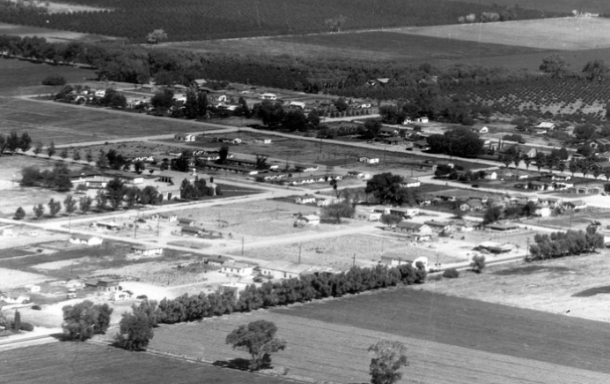Overview
Preserving historic sites and properties is essential to ensuring that we remember our past. It helps save precious resources, which is especially important in an era where sustainability is crucial. Preservation adds character and uniqueness to Scottsdale, known as “The West’s Most Western Town.” It reflects the city's heritage, from the Wild West era where legends were made to the simpler times that foster a strong sense of community.
Established in 1997 by the City Council, the Scottsdale Historic Preservation Program, in cooperation with the Historic Preservation Commission, works to increase public awareness of Scottsdale's heritage; identify historic and cultural resources; designate and recognize significant local resources; and assist in protecting, preserving and enhancing the buildings and structures that best represent Scottsdale's past.
Protection for historic properties is provided through the Historic Property Ordinance, which requires the Historic Preservation Commission to review and approve exterior alterations and demolition requests for buildings on the Scottsdale Historic Register. The Scottsdale Historic Preservation Officer administers the Historic Residential Exterior Rehabilitation Program for homeowners living in historic districts, and provides educational materials to homeowners and interested citizens to heighten public awareness and appreciation of the community's historic resources. View a copy of the city of Scottsdale Historic Property Ordinance.
View the Historic Property Ordinance
Benefits of Historic Preservation
Historic property owners gain the most from preservation, but the Benefits of Historic Preservation extend to the entire community. Property values increase, and tax cuts are available for qualifying homeowners. Heritage tourism is a significant source of revenue, as it is a popular travel form among visitors to Scottsdale. This increased revenue supports local businesses and improves public services at reduced costs for residents. Preservation often involves regular maintenance and restoration rather than extensive reconstruction.
Learn more about Historic Residential Exterior Rehabilitation Program.
Scottsdale Historic Register
Historic Properties
A list of historic properties in Scottsdale is available on the Scottsdale Historic Register. This list includes schools, churches, cultural buildings, and retail shops, though archaeological sites are confidential to protect these resources.
To date, the Scottsdale Historic Register recognizes buildings associated with the early history of the town, the development of the arts and tourism industry in the city, and four postwar residential neighborhoods representing Scottsdale's rapid growth and development in the 1950s and 1960s.
View the Scottsdale Historic Register
If you are interested in viewing current case histories concerning historic preservation activities zoning and hearings, they can be searched at Historic Preservation Cases.
Historic Districts
There are four historic districts: Village Grove 1-6, Town and Country Scottsdale, Villa Monterey Units 1-7, and Sands North Townhouses.
Program Details
- Scope of Historic Preservation
Historic preservation in Scottsdale encompasses various categories, not just buildings. According to the city's Zoning Ordinance Article VI, these categories include buildings, sites, structures, objects, districts, and landmarks. Examples range from homes and stores to petroglyphs, bridges, sculptures, residential neighborhoods, and significant landmarks. Each category is defined to ensure comprehensive preservation of the city's historical assets.
- Archaeology and Historic Preservation
Archaeology is a significant part of historic preservation in Scottsdale. It involves studying artifacts, architecture, and cultural remains, which are vital for understanding history. New archaeological sites can be discovered, and if such discoveries occur, the city collaborates with the City Archaeologist, the Arizona State Museum, and other organizations to ensure proper handling and preservation. Respecting preserved archaeological sites and reporting new discoveries to the Historic Preservation Office is crucial.
- Local vs. National Designation
There are legal distinctions between local and national designations. While the review process is similar, national designation requires the site to be of national significance, whereas local designation applies to sites important to Scottsdale or Arizona history. Each designation offers different economic benefits and protections, with national recognition generally providing greater economic benefits but local recognition offering unique protections.
- Qualifying for Historic Designation
Determining if a property qualifies as historic involves several criteria outlined in Scottsdale's municipal code. These include associations with significant historical events, people, high artistic value, or potential to yield important historical information. Properties must retain their integrity and have the physical features to convey their historical significance.
- Property Usage and Maintenance
Historic recognition does not affect the usage of the property. Owners can buy, sell, rent, and modify the interiors as needed. The focus is on maintaining the exterior appearance. Maintenance requirements are generally minimal and involve regular upkeep. During the designation process, a Historic Preservation Plan is created, detailing any specific maintenance or inspection needs. For properties on the National Register, additional requirements may apply.
- Alterations and Appeals
Alterations to historic properties must align with the Historic Preservation Plan. The Historic Preservation Office and Commission review these alterations, providing certificates for approval. If alterations are not approved, the decision can be appealed to the City Council. The process involves submitting a Pre-Application Request and working with the Historic Preservation Office to achieve the desired goals.
- Demolition of Historic Properties
Demolishing a historic property requires review by the Historic Preservation Commission. If a "Stay of Demolition" is issued, it delays the permit for one year to find a suitable use for the property. Appeals can be made to the City Council. If no suitable use is found after the stay, a demolition permit may be requested.
- Finding Property History
For researching the history of a property, start with family records, previous owners, and relevant paperwork. The City and State provide numerous resources, including the Scottsdale Historic Preservation Office, City Clerk’s Office, City Hall, and the Scottsdale Civic Center Library. The library's databases and professional librarians can assist with research, offering historical documentation, photos, maps, and more. The Scottsdale Heritage Connection and the Friends of the Scottsdale Public Library are additional valuable resources.
Resources and Guides
StoryMap
Historic Context Reports
Tours & Brochures
Additional Resources
Last Updated: May 22, 2025

